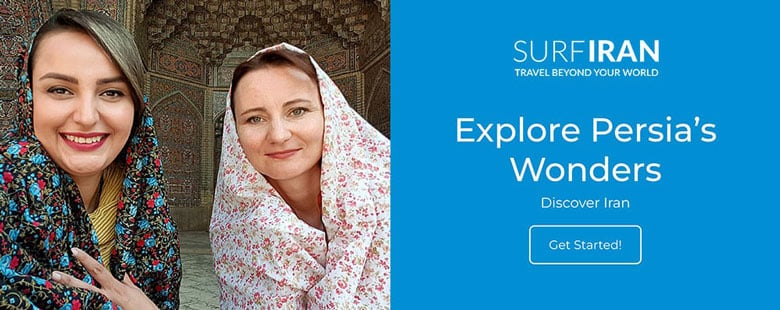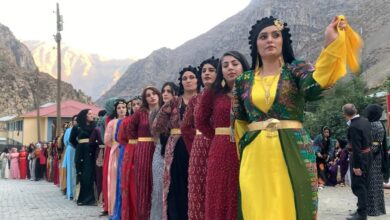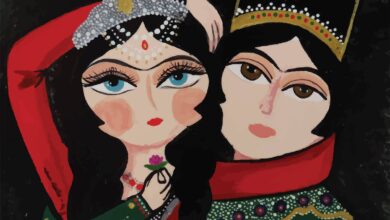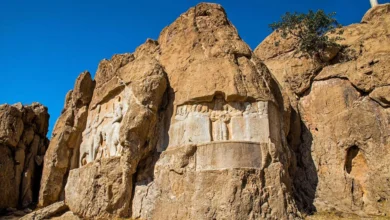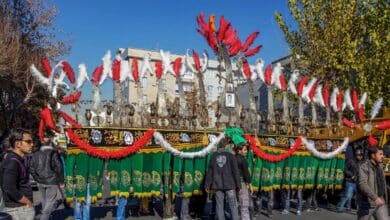Nowruz: A Celebration of Spring and Renewal
Nowruz: Embracing the Arrival of Spring with Joy and Tradition

With winter ending and spring blossoming, more than 300 million people around the globe prepare to celebrate Nowruz. This lively festival marks the Persian New Year and the eternal renewal of humanity.
Marking both a seasonal change and a cultural tradition, Nowruz festivities beautifully capture nature’s reawakening and cultural rebirth.
Here’s everything you need to know about Nowruz when it’s celebrated, and what different cultures honor it.
Contents
An Introduction to Nowruz

Nowruz is the Iranian New Year, celebrated globally across many cultures. At its essence, Nowruz marks the spring equinox – that pivotal celestial moment when day and night match in duration. This symbolic timing represents light triumphing over darkness, a spiritual renewal mirroring nature stirring from its wintry slumber.
With origins in the ancient Zoroastrian faith of Persia, Nowruz represents renewal. Over centuries of Persian empires spanning Asia, Nowruz traditions absorbed rituals from diverse cultures yet retained ancient Zoroastrian roots.
Despite shifting rulers and religions over millennia, Nowruz endures through its universal messages – peace, intergenerational solidarity, and reconciliation.
Date of Nowruz
Nowruz celebrates the spring equinox, landing on March 20th or 21st. In countries like Iran and Afghanistan that follow a solar calendar, Nowruz is considered the first day of the Persian New Year.
But for most other countries celebrating Nowruz that use the Gregorian calendar, it marks the beginning of spring without being their official New Year. Either way, Nowruz celebrations focus on the renewal embodied in the spring equinox.
The Meaning of “Nowruz”
Stemming from the Persian words for “new day,” it heralds the arrival of spring and all its glorious renewal after winter. Different pronunciations emerged as the festival spread, but “Nowruz (pronounced no-rooz)” captures the essence – a new day embarking on another annual cycle of rebirth.
The History and Origins of Nowruz
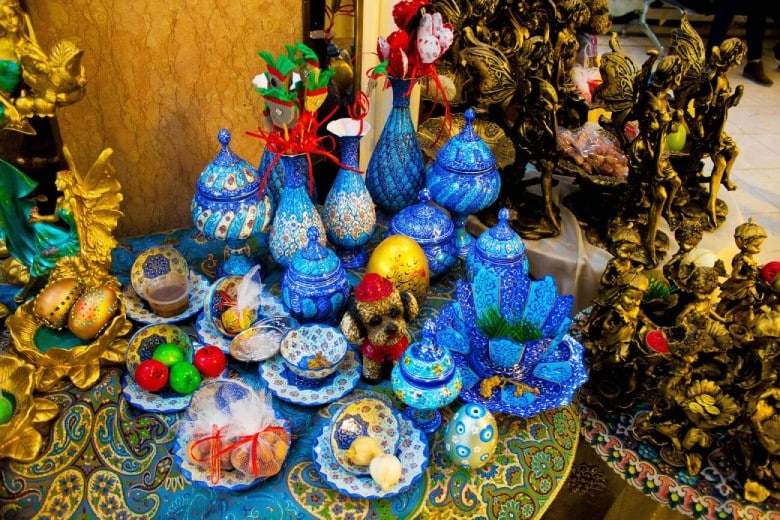
The origins of Nowruz have strong ties to ancient Persian mythology passed down in epic poems called Shahnameh, meaning ‘Book of Kings.’ The mythical Persian king Jamshid, who saved mankind from death during a killer winter, is credited with founding Nowruz celebrations.
According to the myth, Jamshid constructed an ornate throne decorated with jewels that magnified the sun’s power. As sunlight struck the throne, the world filled with light and warmth, nature came alive, and people celebrated by pouring jewels over Jamshid while proclaiming, “this is the New Day” – marking the first day of the New Year.
Archaeological evidence indicates Iranians and their Zoroastrian ancestors may have celebrated the spring equinox and autumn harvests for thousands of years through seasonal agricultural festivals.
As an agricultural society firmly in tune with the seasons, they held significant celebrations twice yearly to mark the natural renewal cycles in spring and fruitfulness in autumn.
The Evolution of Nowruz
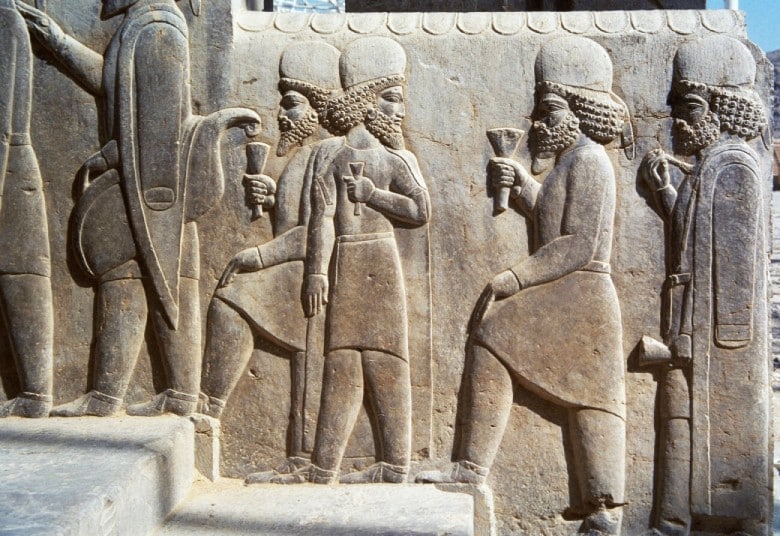
Throughout Persian history spanning the Achaemenid, Arsacid, and Sassanian empires, Nowruz evolved into the most important day of the calendar year. Their extravagant Nowruz celebrations included:
- A whole week of gift exchanges
- Acts of charity
- Pardoning prisoners
- Visits to the royal court
These traditions formed the basis for the Nowruz festivities, still seen today. Despite various conquests by Arab Muslims, Mongols, and others across Persia, Nowruz has survived and thrived over 3000+ years against incredible odds. Its symbolic messages continue to inspire people regardless of religion, ethnicity, or background.
How long is Nowruz?
Traditional Nowruz observances typically run for 13 days, starting March 21st until Sizdah Be-dar on April 2nd. But the length and type of celebrations vary, with some countries declaring it a national holiday while others hold unofficial festivities. Either way, Nowruz remains culturally important for around 300 million people worldwide.
Colorful Nowruz Traditions to Welcome Spring’s Renewal
As the first blossoms herald spring’s arrival, vibrant Nowruz traditions come alive across cities and villages. The joyous Persian New Year celebration is a time for lively customs that symbolize fresh starts and new beginnings.
Embracing New Beginnings with New Clothes
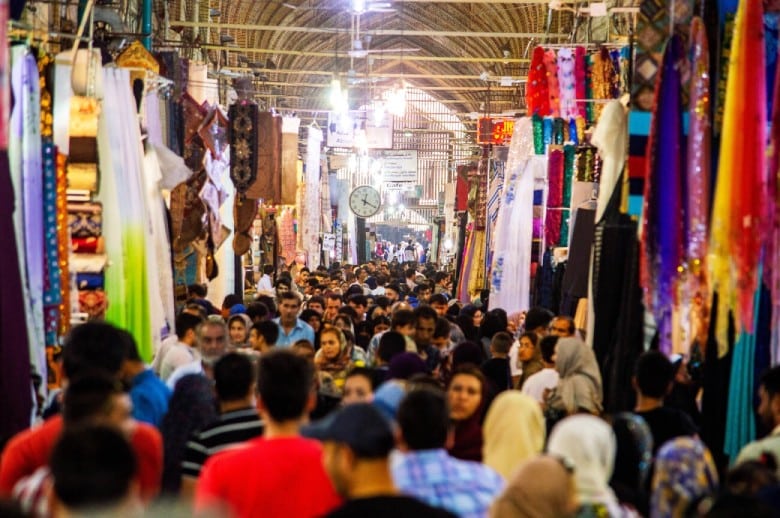
One beloved Nowruz tradition is buying new clothes to wear for the New Year. Donning new garments, no matter how simple signifies renewed spirits and a fresh start for the year ahead. There’s a belief that you must wear something unique to avoid missing out on the year’s blessings! From the humblest homes to royal palaces of the past, all embraced this custom of sporting new threads.
These days, the tradition continues through lively street parades where locals proudly flaunt their new outfits, colorfully welcoming the New Year.
Haji Firuz and Amoo Nowruz

In the final days before Nowruz, two iconic folklore characters herald the arrival of the Persian New Year – Haji Firuz and Amoo Nowruz (Uncle Nowruz).
Haji Firuz is a joyous man wearing a red costume with a red hat. He dances through the streets, playing a small tambourine, telling jokes, and singing songs to announce Nowruz is near. Children delight in spotting Haji Firuz and giving him small amounts of money.
Accompanying Haji Firuz is the whimsical figure of Amoo Nowruz with his white hair, felt hat, blue silk belt, and thin flat shoes. This mythical character also roams cities and villages, heralding the arrival of the New Year festivities.
Revitalizing Homes with Spring Cleanings
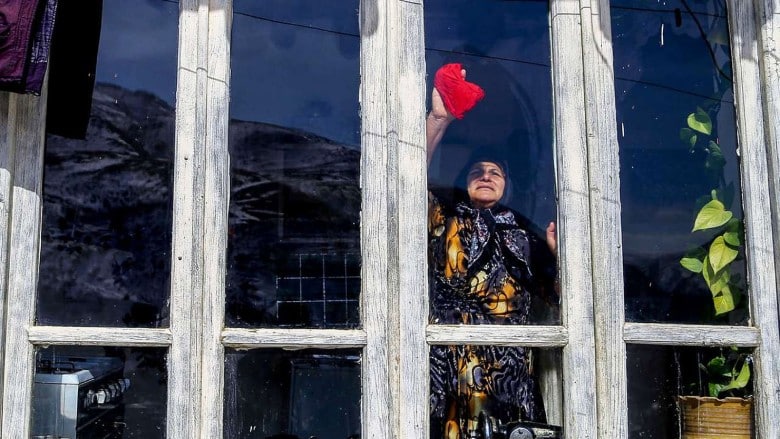
Just as nature awakens after winter, so must homes undergo a vibrant revival. A quintessential Nowruz ritual is the “spring cleaning” – a thorough scrubbing and decluttering of living spaces in anticipation of the new year.
Rooted in the Zoroastrian philosophy of purity, people meticulously clean every nook and cranny. In some houses, fresh coats of paint brighten rooms, repairs are made, and clutter is cleared out. Rugs get vigorously shaken out and then laid for festive picnics. Open windows invite gentle breezes to sweep away stale energies. Homes transform into sanctuaries worthy of Nowruz’s renewal.
Sprouting Wheatgrass for Fertility and Growth
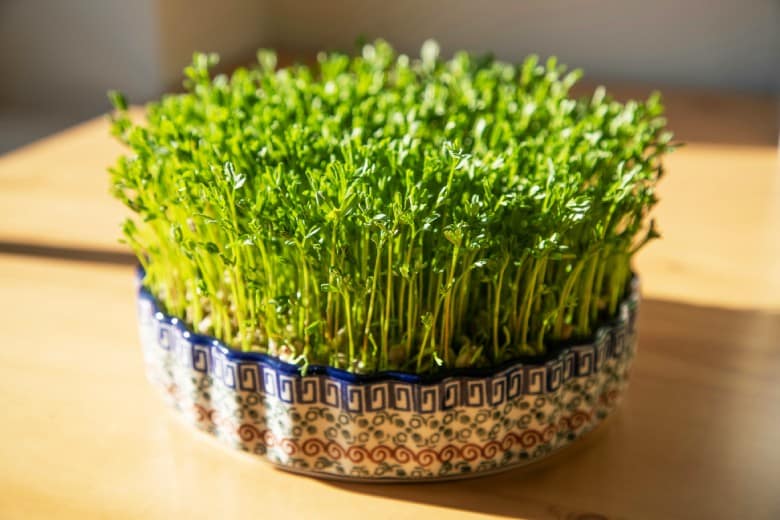
Around two weeks before Nowruz, families engage in the ancient tradition of sprouting wheatgrass, known as “Sabzeh.” This tray of green shoots symbolizes the revival of spring and its fertile blessings.
Wheat grains are nurtured on moist trays with patience and care until vibrant green growth emerges. On New Year’s Day, the Sabzeh takes pride of place as a centerpiece on the”Haft Seen” table (more on that below). But its journey is still ongoing!
The Ceremonial Samanu Pudding
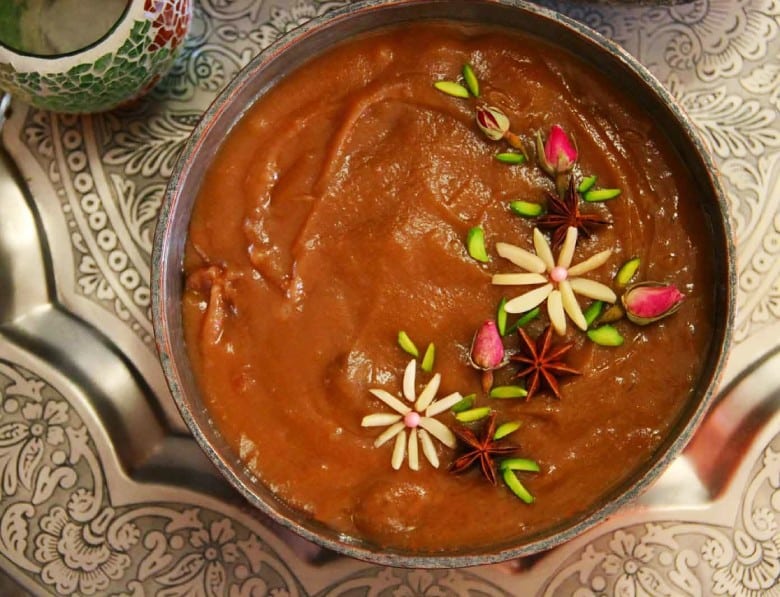
One highlight cuisine item of the Haft Seen table is Samanu; a thick, sweet pudding made from germinated wheat. In many Iranian regions, preparing samanu takes on a ceremonial community affair.
Families and friends gather to cook this delicacy, singing traditional songs and sometimes performing local dances. The main ingredients are sprouted wheat kernels and flour, creating a dessert decadent in symbolic meaning and nutritional benefits for Nowruz.
The Revitalizing Sabzi Polo Feast
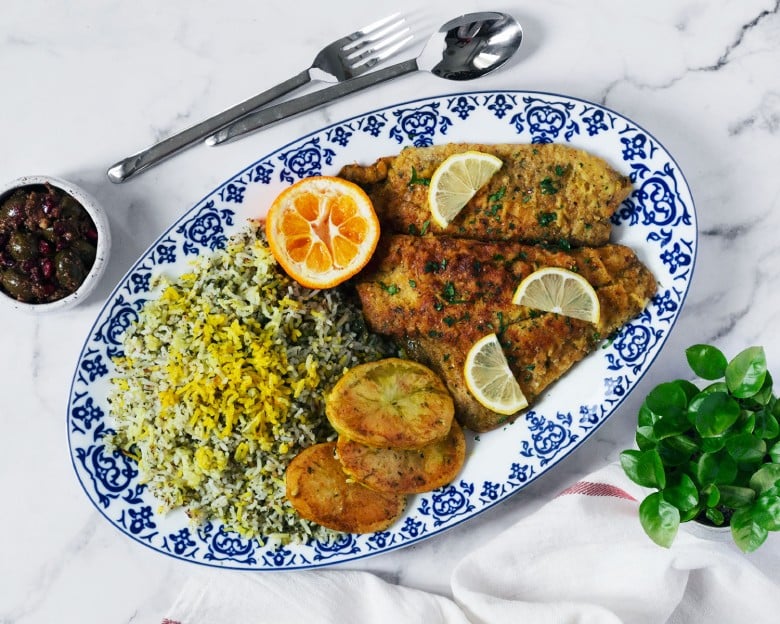
On the eve of Nowruz, the aroma of sabzi polo (herb rice) wafts through homes. This fragrant dish made with fresh greens, garlic and fish is believed to revive the heart and fill it with vibrancy for the coming year.
The Symbolic Haft Seen Table

At the start of the Nowruz festivities, homes across Iran, Afghanistan, and Azerbaijan lay out the beautifully symbolic “Haft Seen” table. “Haft” means seven, and “Seen” represents the Persian letter “S” – so this table displays seven items starting with the “S” letter.
These seven elements express Nowruz’s core themes of awakening, love, patience, purity, fertility, and prosperity. Typical Haft Seen tablets contain:
- Sabzeh: The wheatgrass tray symbolizes rebirth
- Senjed: Sweet dried russian olives representing love
- Samanu: Sweet pudding made with sprouted wheat
- Sir: Garlic, signifying good health and medicine
- Sib: Apples symbolizing beauty and fertility
- Somaq: Bright red sumac for sunrise and dawn
- Serkeh: Vinegar, reflecting the virtues of patience and wisdom
Other items like painted eggs for new life, mirrors, coins attracting prosperity, and candles conveying warmth often adorn the table too. Families gather around the Haft Seen exchanging New Year wishes while elders gift children cash envelopes.
Visiting Elders and Gift Giving
Once Nowruz dawns, the festivities kick into full gear with a beloved tradition of visiting elders, especially on the first few days. Younger family members make the rounds, paying respects and sharing quality time.
Mending Rifts and Making Peace
Beyond the physical spring cleaning of homes, Iranians embrace a tradition of cleansing their hearts and souls during Nowruz.
Feelings of sadness, doubts, and disappointment are cast aside to nurture the seeds of hope, love, and friendship.
Giving Eidi Gifts and Well Wishes

One of the most beloved Nowruz customs is Eidi – exchanging small cash gifts and well wishes, especially from elders to youngsters.
The act of giving eidi symbolizes prosperous blessings for the New Year. It cements the spirit of generosity and kindness and maintains the intergenerational ties crucial to Nowruz’s essence.
Sizdah Be-dar
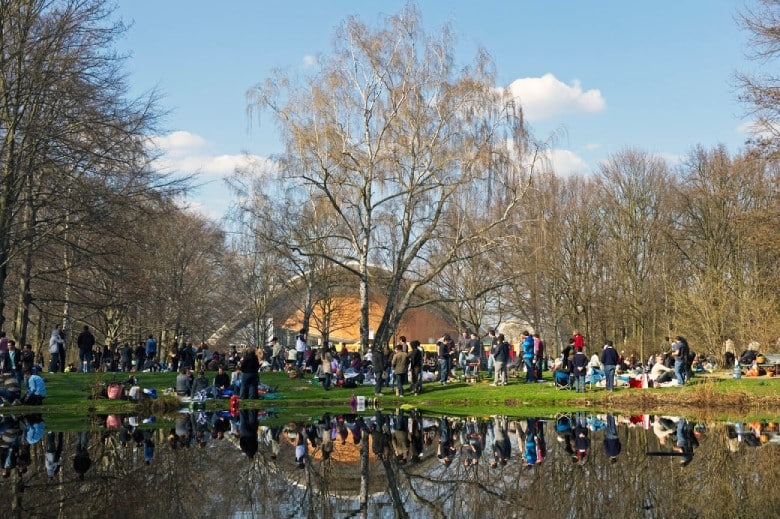
After 12 days of festivities, Nowruz ends in the Sizdah Be-dar (on the 13th day). “Sizdah Be-dar” translates to “getting outdoors on the 13th” as people spend time communing with nature.
On this concluding day, families venture out for picnics in parks and forests, playing games, enjoying music, and socializing. There is also the tradition of casting the Sabzeh grass into rivers and lakes, allowing its essence to return to the earth and complete the symbolic cycle of rebirth.
Global Recognition as Cultural Heritage
In 2010, UNESCO added the Nowruz celebration to its Intangible Cultural Heritage of Humanity list. A year later, the United Nations officially recognized March 21st as International Nowruz Day, cementing this festival’s worldwide importance.
An Official Holiday in 15 Nations
Nowruz is celebrated as an official public holiday in 15 countries that were once part of the historic Persian empire:
- Afghanistan
- Albania
- Azerbaijan
- Georgia
- Iran
- Iraq
- Kazakhstan
- Kosovo
- Kyrgyzstan
- Tajikistan
- Turkmenistan
- Turkey
- Uzbekistan
It’s also enthusiastically observed in parts of Pakistan, India, and China by communities with Persian cultural ties.
Unique Nowruz Traditions Country by Country
While the core symbolism remains universal, each region puts its unique cultural stamp on the Nowruz festivities. Here’s a glimpse into how various nations celebrate:
Iran – The Global Epicenter
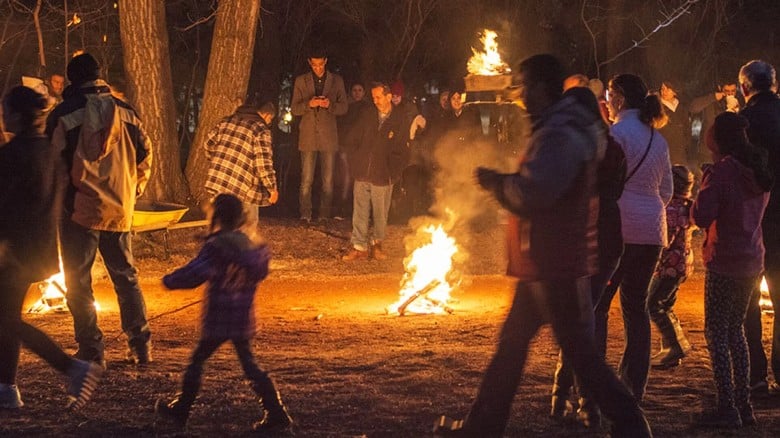
The most extravagant and widespread Nowruz celebrations occur in Iran, the ancient homeland of this tradition. Festivities start with the iconic “Chaharshanbe Suri” fire-jumping ritual before the spring equinox. Entire families gather in streets bearing bonfires and firecrackers. As flames roar, they jump over, shouting, “my yellow is yours, your red is mine,” to cleanse misdeeds and attract health and warmth.
The following 13 days burst with feasts, family gatherings, and picnics bidding farewell to winter. Street stalls waft the aroma of celebratory specialties through decorated neighborhoods.
Afghanistan – Feasting and Buzkashi Polo

Afghan Nowruz festivities are most exuberant in the northern regions, sharing cultural ties with neighbors. The week starts with hearty feasts and countrywide celebrations centered on Buzkashi – an ancient nomadic horseback game.
Up to 10 riders battle to snatch and carry a headless goat carcass across a field, showcasing phenomenal equestrian skills. Women play vital roles like painting eggs, weaving wreaths, and sewing ceremonial blankets for grave offerings.
Azerbaijan – Fire Rituals and Celebrations
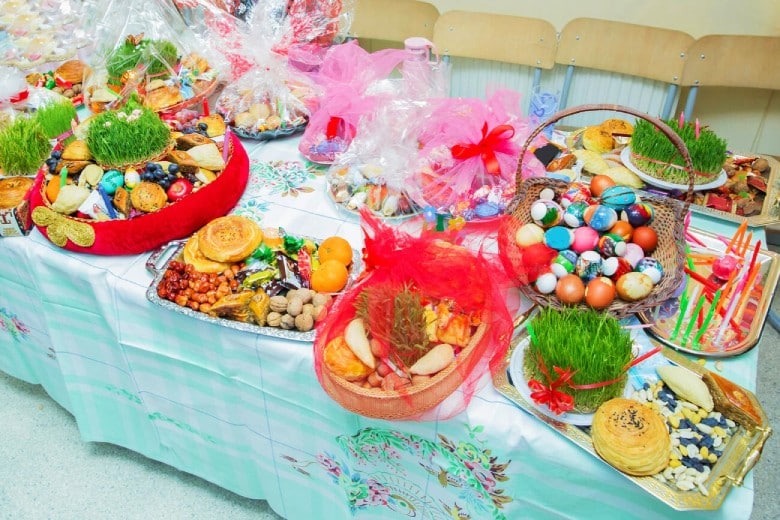
Nowruz in Azerbaijan doesn’t mark their official New Year but ushers in spring in grand fashion. Weeks before the equinox, locals commence Wednesday bonfire gatherings, culminating in the festival of “Novruz Bayram,” honoring the fertility goddess.
As night falls, streets fill with revelers jumping over flames while making wishes. After the equinox, communities host sports, dances, and music recitals and indulge in specialties like shekerbura pastries and plov rice dishes.
Kazakhstan and Kyrgyzstan – Unique Mountain Fusions

In Kazakhstan and Kyrgyzstan’s remote mountain regions, Nowruz blends Persian roots with nomadic customs through month-long festivities. Horse games, races, and cultural concerts culminate in the Nauryz public holiday on March 22nd.
Meanwhile, Kyrgyz villagers gather for the “Nooruz Kedje” soup from 7 spring vegetables. As night falls, the streets fill with festive meals, dancing, and bardic storytelling.
India – Embraced by Scattered Communities
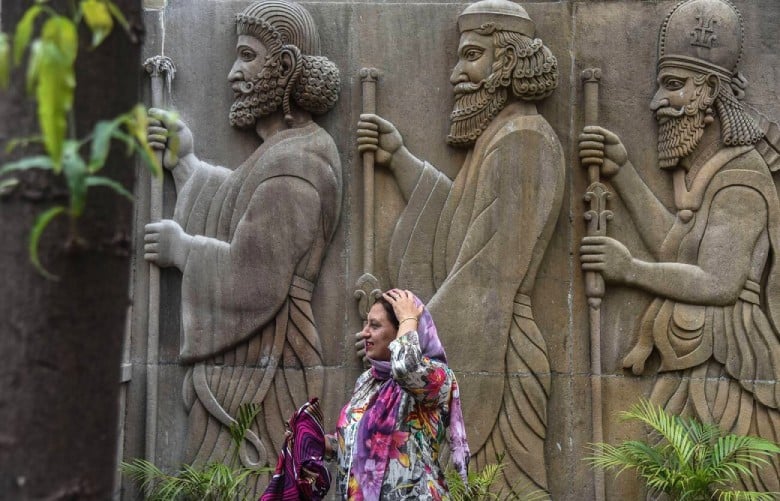
Nowruz traditions in India trace back to the Mughal Empire and still hold importance for scattered Persian-descended communities today. In Kashmir, Muslims treat it as their New Year, donning new clothes while elders gift youth cash. Sweet delicacies and dried fruits fill homes hosting celebratory gatherings. Lively “Nowruz Pirukh!” (Happy Nowruz) processions parade through streets in smaller towns.
Parsee Zoroastrians from early Persian immigrants also mark Nowruz privately at home through rituals like wearing new garments, exchanging gifts, and offering thanks for renewal in the temple.
BOOK ONLINE
Iran Hotels
Final Words
Nowruz marks the Iranian New Year and the arrival of spring. Families thoroughly clean homes and don new clothes to embrace the season’s rebirth. Special rituals like home decorations and communal meals aim to reflect on positivity and bond communities.
Public celebrations see people leap over fires carrying last year’s negativity. At its heart, Nowruz reminds us of nature’s renewal cycle and our shared dependence on the environment.
Wherever you are, take a moment to appreciate spring’s natural beauty that welcomes all freely. Nowruz continues nurturing hope through this inclusive message of fellowship year after year.
Frequently Asked Questions About Nowruz
When does Nowruz take place each year?
Nowruz corresponds to the spring equinox, usually falling on March 20 or 21st. In countries like Iran, it marks the first day of their New Year. But Nowruz ushers in spring without being the official New Year date in places that use the Gregorian calendar.
How long do Nowruz celebrations last?
The length of celebrations varies across different countries. But commonly, it’s a two-week affair that starts on Nowruz itself and then culminates 13 days later in Sizdah Be-dar rituals. Some regions declare it an official holiday, while others hold informal festivities.
Who founded the Nowruz celebrations?
According to Persian mythology, a legendary King, Jamshid, saved humanity from a catastrophic winter by creating daylight. People poured jewels over him, proclaiming, “This is the New Day,” which marked the first Nowruz and the dawn of the Persian New Year.
Is Nowruz linked to any religion?
Zoroastrianism provides the theological foundations of Nowruz. As their major spring festival venerating light’s triumph over darkness, renewal, and the Ecstasy of the Sacred Naw, Nowruz retains deep spiritual meaning for Zoroastrians. But it became a secular cultural festival celebrated by diverse peoples as International Nowruz Day.
